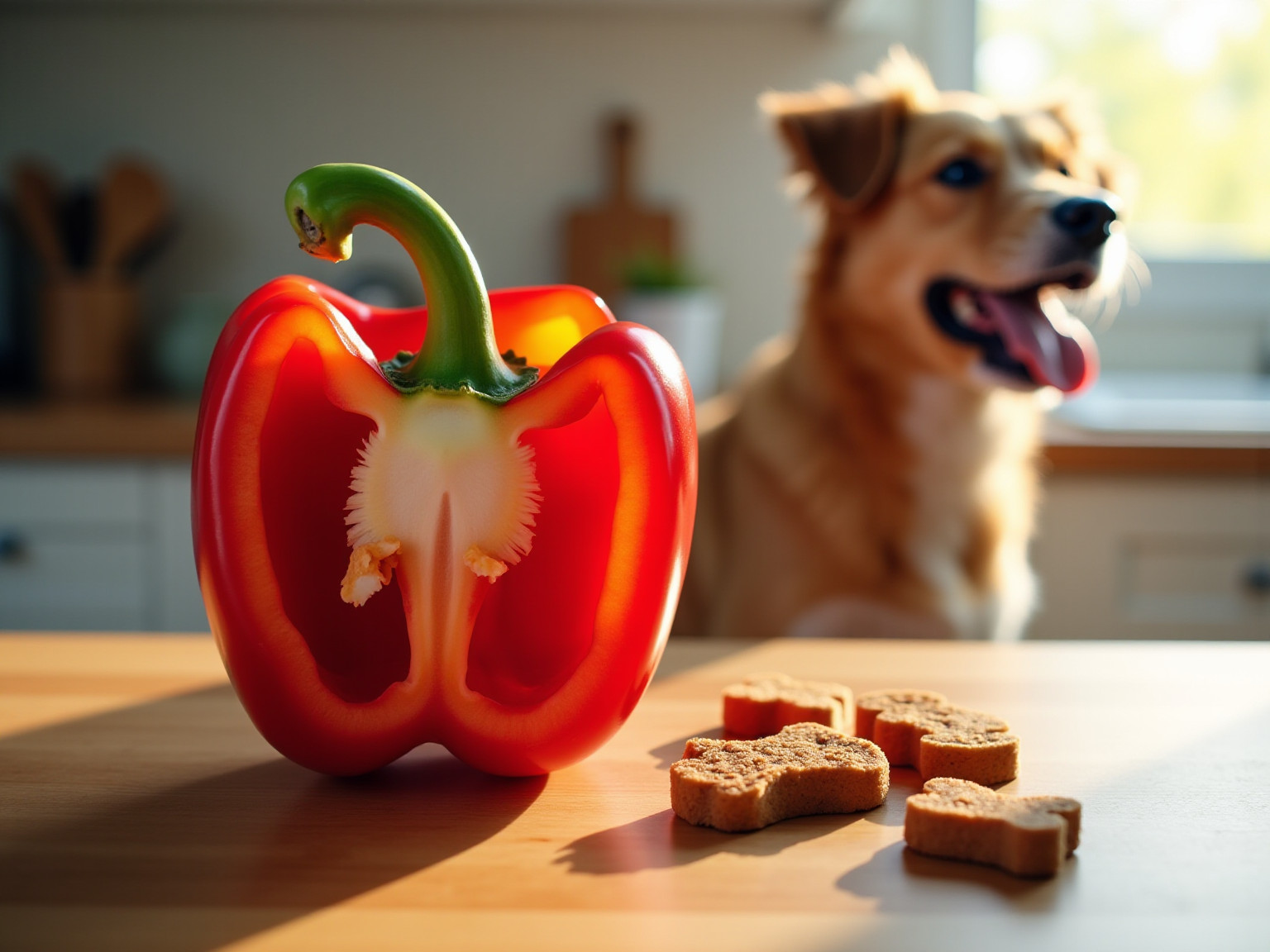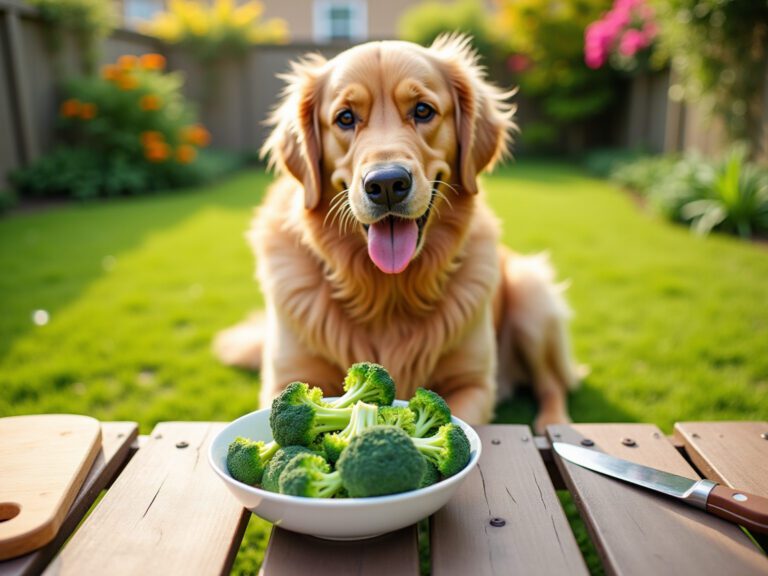Can Dogs Eat Red Peppers? Understanding Their Benefits and Risks
Overview
As a loving pet owner, you may wonder about the best foods for your furry family members. Did you know that dogs can enjoy red peppers? These vibrant vegetables are packed with vitamins and antioxidants that can support your dog’s immune function and digestion. It’s wonderful to think about how such simple foods can contribute to their health!
However, it’s important to approach this with care. Moderation is key, as excessive consumption of red peppers can lead to gastrointestinal issues. To ensure the safety of your beloved pet, be sure to prepare them properly by removing the seeds and stems.
By taking these small steps, you can provide a nurturing environment for your dog and help them thrive. Your commitment to their well-being is truly commendable, and every little effort counts in keeping them healthy and happy.
Introduction
In the quest for optimal health for your furry family members, pet owners often seek nutritious and safe food options to enhance their beloved companions’ diets. Among these, red peppers shine brightly—not only for their vibrant color and sweet flavor but also for their impressive nutritional profile. Packed with essential vitamins and antioxidants, red peppers can significantly boost a dog’s immune system, promote healthy skin, and support digestion.
However, while these delightful peppers can be a wonderful addition to your dog’s meals, it’s crucial to understand the potential risks and proper preparation methods to ensure a safe experience. This article explores the benefits, precautions, and guidelines for incorporating red peppers into your dog’s diet, helping you make informed decisions for your cherished pets.
Define Red Peppers and Their Nutritional Value for Dogs
Red fruits, often referred to as red bell fruits, belong to the Capsicum annuum species and are cherished for their vibrant color and sweet flavor. These vegetables are packed with essential nutrients, including vitamins A, C, and E, along with antioxidants like beta-carotene and lutein. These nutrients play a vital role in enhancing your furry family members’ overall health by strengthening their immune function, promoting a healthy skin and coat, and supporting vision.
Additionally, when considering if can dogs eat red peppers, it’s important to note that red vegetables are low in calories and high in fiber, making them an excellent snack choice for dogs when offered in moderation. Research shows that capsanthin, a carotenoid found in red bell fruits, exhibits anti-tumor activity, particularly beneficial for colon health. This highlights the potential health benefits of including red vegetables in your dog’s diet, and specifically raises the question of whether can dogs eat red peppers, as long as they are prepared correctly.
As Dr. Hunter Finn, an integrative veterinary expert, emphasizes, “It’s important to make sure you’re following vet-approved homemade dog food recipes so your pup is getting all of the essential nutrients they need.” Overall, red vegetables can be a nutritious addition to your dog’s diet, and you might wonder, can dogs eat red peppers, as they contribute to their well-being and vitality.
Moreover, similar to fruits like watermelon and cantaloupe that help keep pets hydrated while delivering essential nutrients, it’s important to know can dogs eat red peppers, as these red vegetables can also serve as a delightful and nutritious snack for your canine companions. By incorporating these colorful vegetables into their meals, you’re nurturing their health and happiness.
Explore the Health Benefits of Red Peppers for Dogs
When considering the diet of your furry family members, you might wonder if can dogs eat red peppers, as they offer numerous health advantages. Their high vitamin C content plays a crucial role in boosting the immune system, while vitamin A contributes to maintaining healthy eyes and skin.
Furthermore, red fruits are abundant in antioxidants such as beta-carotene, which assist in diminishing inflammation and fighting oxidative stress—especially beneficial for older dogs. The dietary fiber found in red vegetables promotes healthy digestion, supporting a well-functioning gut and assisting in the prevention of constipation and diarrhea.
By adding small quantities of red vegetables into your dog’s diet, you can enhance their overall vitality and longevity, making these vibrant foods a nutritious addition to meals or treats. However, it’s important to be aware that red vegetables, including red peppers, contain a molecule called capsaicin, which can irritate a dog’s digestive tract and lead to diarrhea, raising the question of can dogs eat red peppers, as noted by Dr. Stephanie Sheen, DVM.
Additionally, small vibrant vegetables also demonstrate significant nutritional advantages, though more research is needed to fully understand their effects. If you’re uncertain about feeding bell vegetables to your pets, it’s wise to consult a veterinarian or animal nutritionist. Expert advice can provide valuable insights into safe food choices, ensuring you make informed decisions for your beloved companions. Consulting professionals for pet nutrition can help address any questions about your dog’s diet and the safety of certain foods, creating a nurturing environment for your pets.
Identify Risks and Precautions When Feeding Red Peppers to Dogs
As a caring pet owner, it’s important to consider whether can dogs eat red peppers, as red vegetables can indeed be a nutritious addition to your furry family members’ diets, but caution is necessary. Feeding your canine small portions is essential to prevent gastrointestinal disturbances, which may manifest as diarrhea or vomiting. Consuming excessive amounts of bell varieties can lead to such issues, making moderation crucial. Remember to eliminate seeds and stems, as these can pose choking hazards or be difficult for your pets to digest. Hot chilies, including jalapeños, should be entirely avoided due to the potential for serious digestive discomfort.
It’s essential to slowly incorporate unfamiliar foods into your pet’s diet; abrupt changes can cause gastrointestinal problems. It is also advised to observe your pet for any negative responses, particularly as allergic reactions to sweet peppers may occur in dogs with certain pollen allergies, raising the question of can dogs eat red peppers? To ensure a safe experience, snacks should not exceed 10% of your dog’s overall diet. Furthermore, bell vegetables contain luteolin, a phenol with anticancer and anti-inflammatory properties, which can enhance your dog’s nutrition. By adhering to these precautions, you can safely include red vegetables in your pets’ meals, and you might wonder, can dogs eat red peppers, enriching their diet while keeping their health a top priority.
Guide on Preparing and Serving Red Peppers to Dogs
To safely prepare red vegetables for your furry family members, start by thoroughly washing them to remove any pesticides or dirt. As Corinne Homer wisely suggests, make sure the spice is fresh and ripe, rinse it under the tap, and chop it into bite-sized pieces. Slice the vegetable in half, taking care to remove the seeds and stem. Red chili can be served raw, sliced into small, manageable pieces, or cooked to soften their texture. Steaming is particularly beneficial, as it preserves most nutrients while enhancing digestibility.
It’s essential to refrain from adding any seasonings, oils, or sauces, as these can be harmful to your beloved pets. When you introduce red vegetables into your dog’s diet, such as red peppers, you might wonder if can dogs eat red peppers; start with a small piece to observe their reaction before gradually increasing the amount. Remember, each dog may respond differently to new foods, so it’s important to be mindful. Consult with a veterinarian if you suspect your pet has a food allergy. It is important to know that while can dogs eat red peppers, they can also be allergic to any food, including peppers, and may exhibit symptoms like reddening skin or swelling. Your attention to these details ensures a nurturing environment for your furry companions.

Conclusion
Incorporating red peppers into your furry friend’s diet can offer numerous health benefits, making them a valuable addition to their meals. Rich in essential vitamins A, C, and E, along with antioxidants, red peppers can enhance immune function, support healthy skin, and even promote good vision. Their high fiber content aids digestion, contributing to overall vitality and longevity in dogs. However, moderation is key, as excessive consumption can lead to gastrointestinal issues.
As a caring pet owner, it’s important to be aware of the potential risks associated with feeding red peppers. Proper preparation is crucial to avoid choking hazards and digestive distress. This includes:
- Removing seeds and stems
- Serving the peppers in manageable pieces
Gradually introducing this new food is vital, as sudden dietary changes can upset your dog’s stomach. Consulting with a veterinarian or animal nutritionist can provide additional guidance to ensure safe and healthy choices for your beloved pet.
Ultimately, with the right precautions and preparation, red peppers can be a nutritious and delightful treat for dogs. By making informed decisions and prioritizing their well-being, you can enhance your companions’ diets and contribute positively to their health. Red peppers not only add variety to meals but also deliver a wealth of nutrients that support a happy and healthy life for your furry family members.
Frequently Asked Questions
What are red fruits, and what species do they belong to?
Red fruits, often referred to as red bell fruits, belong to the Capsicum annuum species and are known for their vibrant color and sweet flavor.
What essential nutrients do red peppers contain?
Red peppers are packed with essential nutrients, including vitamins A, C, and E, as well as antioxidants like beta-carotene and lutein.
How do these nutrients benefit dogs?
The nutrients in red peppers enhance dogs’ overall health by strengthening their immune function, promoting healthy skin and coat, and supporting vision.
Are red peppers a suitable snack for dogs?
Yes, red peppers are low in calories and high in fiber, making them an excellent snack choice for dogs when offered in moderation.
What potential health benefits do red peppers have for dogs?
Research indicates that capsanthin, a carotenoid found in red peppers, exhibits anti-tumor activity, which is particularly beneficial for colon health.
What should be considered when feeding red peppers to dogs?
It’s important to ensure that red peppers are prepared correctly and to follow vet-approved homemade dog food recipes to ensure dogs receive all essential nutrients.
Can red peppers contribute to a dog’s hydration and nutrition?
Yes, similar to fruits like watermelon and cantaloupe, red peppers can help keep pets hydrated while delivering essential nutrients.
How can red peppers be incorporated into a dog’s diet?
By incorporating red peppers into their meals, dog owners can nurture their pets’ health and happiness.







